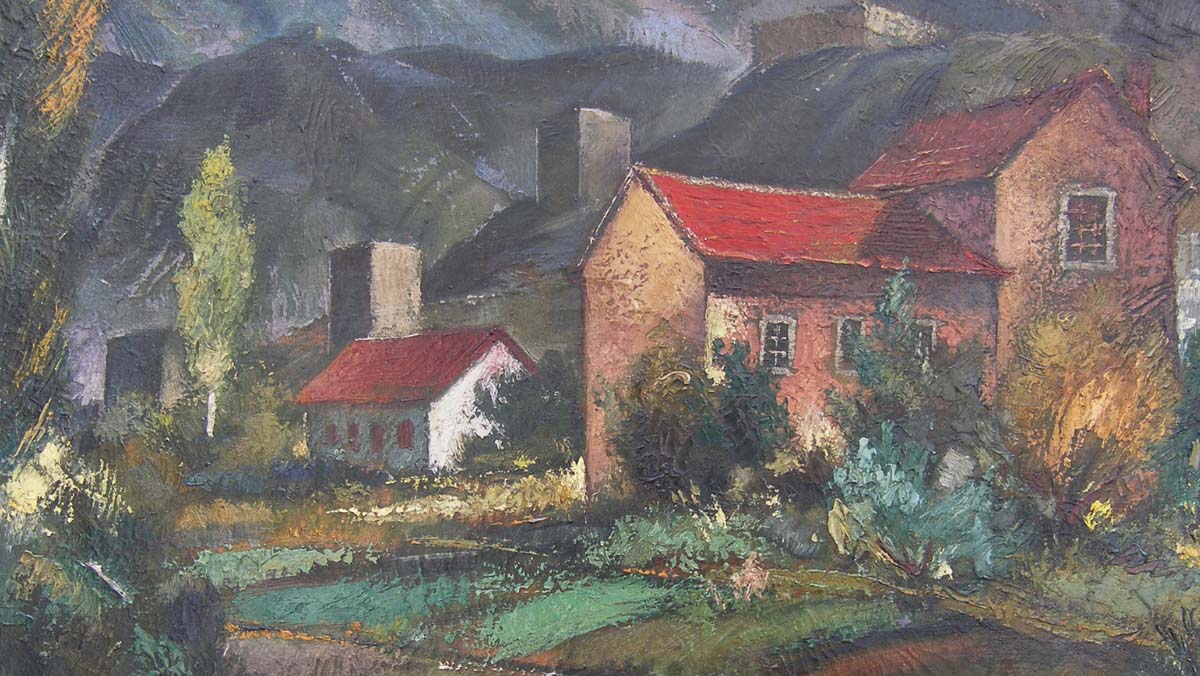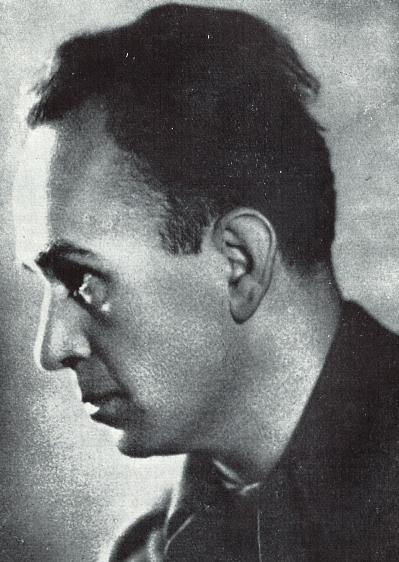
May 9 – 23, 2019
The National Gallery of BiH has the honor and unique opportunity to organize, in cooperation with the Serbian Cultural and Educational Society “Prosvjeta” Sarajevo, another large retrospective exhibition of Branko Šotra’s works, after almost thirty years from the last one. This artist was primarily represented in the Yugoslav art history as a graphic artist, especially with the opus created during the last fifteen years of his life (1945-1960), so his paintings did not receive sufficient expert recognition. His works in the field of woodcarving, iconography and wall painting are even less known.
Branko Šotra’s paintings are presented with ten works at this exhibition – nine oil paintings on canvas and plywood that are kept in the holdings of the National Gallery of BiH and one oil painting owned by the Sarajevo Museum. However, Šotra left few paintings behind anyhow. They are paintings with motifs of Bosnian villages and towns, rural and urban landscapes made during 1930s, while the artist lived in Bosnia.
The bas-reliefs shown at this exhibition come from the holdings of the National Gallery of BiH and the Historical Museum of BiH. Two reliefs from the National Gallery of BiH are icons of St. John the Baptist and St. Sava (1939) made in high relief. The reliefs from the Historical Museum of BiH show the peasants working in the fields.
Drawings and graphics dominate this exhibition, and within its setting we can follow the development course or line of Branko Šotra’s graphic art. Art criticism speculates that Šotra’s role model in graphic art was his professor Ljubomir Ljuba Ivanović who taught him drawing from life during the studies. Šotra was little involved in graphics before 1945.
The opening group of the exhibition i consists of drawings and graphics with motifs that connect the artist with his native Herzegovina and Stolac – the stećaks. A large group of exhibited drawings and graphics is made of urban vedutas of Mostar, Počitelj, Trebinje and Stolac in Herzegovina, and Jajce in Bosnia, with their typical style of traditional construction. A separate group consists of graphics and drawings with depictions of field works, which bring us closer to national customs, to farming and rural way of life in Bosnia and Herzegovina.
Another separate group of graphics consists of prints with the topic of the National Liberation Struggle (NOB) that were made after the Second World War. The artist himself, as an active fighter and commander who performed political activities and duties in the same time, had innumerable memories and strong impressions from battles, clashes with the enemy and offensives, a Partisans’ life in general. In time, people will gradually disappear from the graphics, and only the magnificent nature remembered by the artist remains.
It is precisely the nature that will become a universe for itself, an endless field for exploring and perfecting in the field of graphics for an artist like Šotra. The graphics, more precisely the technique of woodcut and linocut, were the medium in which Šotra managed to evoke and demonstrate all the beauty and ruthlessness of nature. Even images that were recognizable to the eye as a stump, a burnt down forest – its terrible, creepy, lonely scorched remains, a forest bare and lifeless, or karst, stone, rock – its almost morphologically depicted layers slowly become something unrecognizable, an abstract, just an association. The prints possess an unusual atmosphere, as if they contain one additional element, a certain sound, and that sound is, in fact, a continuous silence. Some of the graphic prints Šotra gave a title Silence.
Dragana Brkić–Hodak
Branko Šotra (Kozice kod Stoca, BiH, 1906 – Stockholm, Sweden, 1960) graduated from the Royal Art School in Belgrade in 1929. Worked in Sarajevo 1930-1937, Loznica 1937-38, Ohrid 1938-40 and Vršac 1940-41. Arrested twice as a communist before the war (in 1933 and 1936). Produced paintings, graphics, engravings, applied arts and art criticism. He was the director of the Military Museum in Belgrade and a full professor and rector of the Applied Arts Academy in Belgrade.
Workshops for children
If you are creative or you just love art, sign up for an educational – art workshop within this exhibition. The workshops are free and applications are open:
- workshop for children aged 3–6 years, May 11 at 12pm
- workshop for children aged 10–14 years, May 18 at 12pm
- workshop for children aged 7–10 years, May 22 at 17pm

